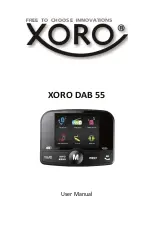
O
OP
PE
ER
RA
AT
TIIN
NG
G T
TIIP
PS
S
The following conditions tend to reduce the effective range
of two-way radios and should be avoided whenever possible.
•
Operating the radio in low areas of terrain or while under
power lines or bridges.
•
Operating the radio inside of a vehicle or in a metal or steel
framed building unless using an outside antenna.
•
Obstructions such as mountains or buildings between the
sending and receiving parties.
In areas where transmission or reception is poor, some im
-
provements may be obtained by insuring that the antenna is
vertical. Moving a few yards in another direction or moving to a
higher elevation may also improve communication.
B
BA
AT
TT
TE
ER
RY
Y P
PA
AC
CK
KS
S
C
CH
HA
AR
RG
GIIN
NG
G T
TH
HE
E B
BA
AT
TT
TE
ER
RY
Y P
PA
AC
CK
K
After receiving a new rechargeable battery pack from the
factory, it should be fully charged before placing it into service.
This also applies to rechargeable batteries that have been
stored for long periods. When the battery pack requires charg
-
ing the radio will signal the operator with an alert tone and
will turn on.
Chargers are available with nominal charge times of 1 hour
(rapid) and 14 hours (standard). Combinations include single and
multi-position, standard and rapid charge units. In addition, the
B
BA
AT
T
7
711














































